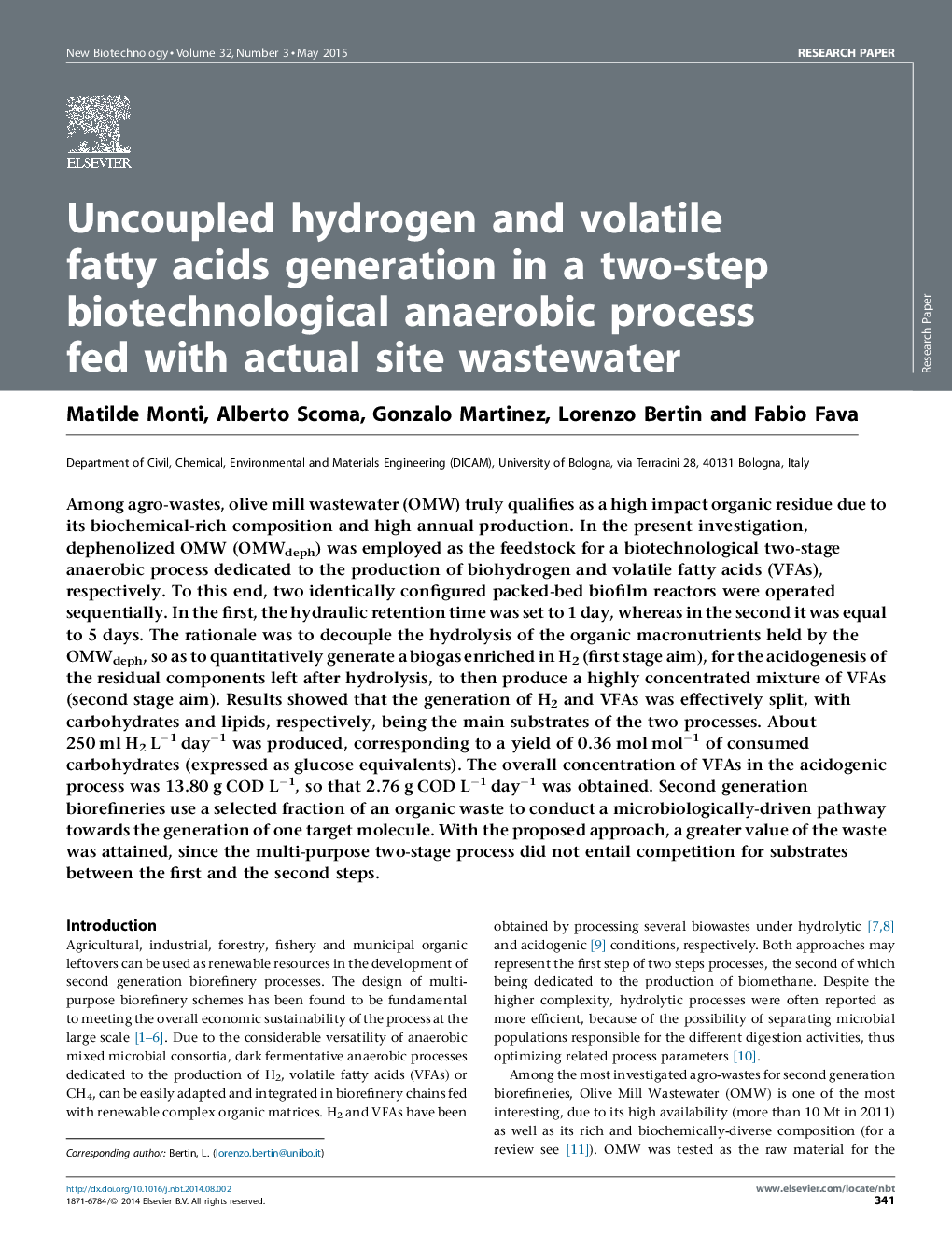| کد مقاله | کد نشریه | سال انتشار | مقاله انگلیسی | نسخه تمام متن |
|---|---|---|---|---|
| 33295 | 44966 | 2015 | 6 صفحه PDF | دانلود رایگان |
Among agro-wastes, olive mill wastewater (OMW) truly qualifies as a high impact organic residue due to its biochemical-rich composition and high annual production. In the present investigation, dephenolized OMW (OMWdeph) was employed as the feedstock for a biotechnological two-stage anaerobic process dedicated to the production of biohydrogen and volatile fatty acids (VFAs), respectively. To this end, two identically configured packed-bed biofilm reactors were operated sequentially. In the first, the hydraulic retention time was set to 1 day, whereas in the second it was equal to 5 days. The rationale was to decouple the hydrolysis of the organic macronutrients held by the OMWdeph, so as to quantitatively generate a biogas enriched in H2 (first stage aim), for the acidogenesis of the residual components left after hydrolysis, to then produce a highly concentrated mixture of VFAs (second stage aim). Results showed that the generation of H2 and VFAs was effectively split, with carbohydrates and lipids, respectively, being the main substrates of the two processes. About 250 ml H2 L−1 day−1 was produced, corresponding to a yield of 0.36 mol mol−1 of consumed carbohydrates (expressed as glucose equivalents). The overall concentration of VFAs in the acidogenic process was 13.80 g COD L−1, so that 2.76 g COD L−1 day−1 was obtained. Second generation biorefineries use a selected fraction of an organic waste to conduct a microbiologically-driven pathway towards the generation of one target molecule. With the proposed approach, a greater value of the waste was attained, since the multi-purpose two-stage process did not entail competition for substrates between the first and the second steps.
Journal: New Biotechnology - Volume 32, Issue 3, 25 May 2015, Pages 341–346
